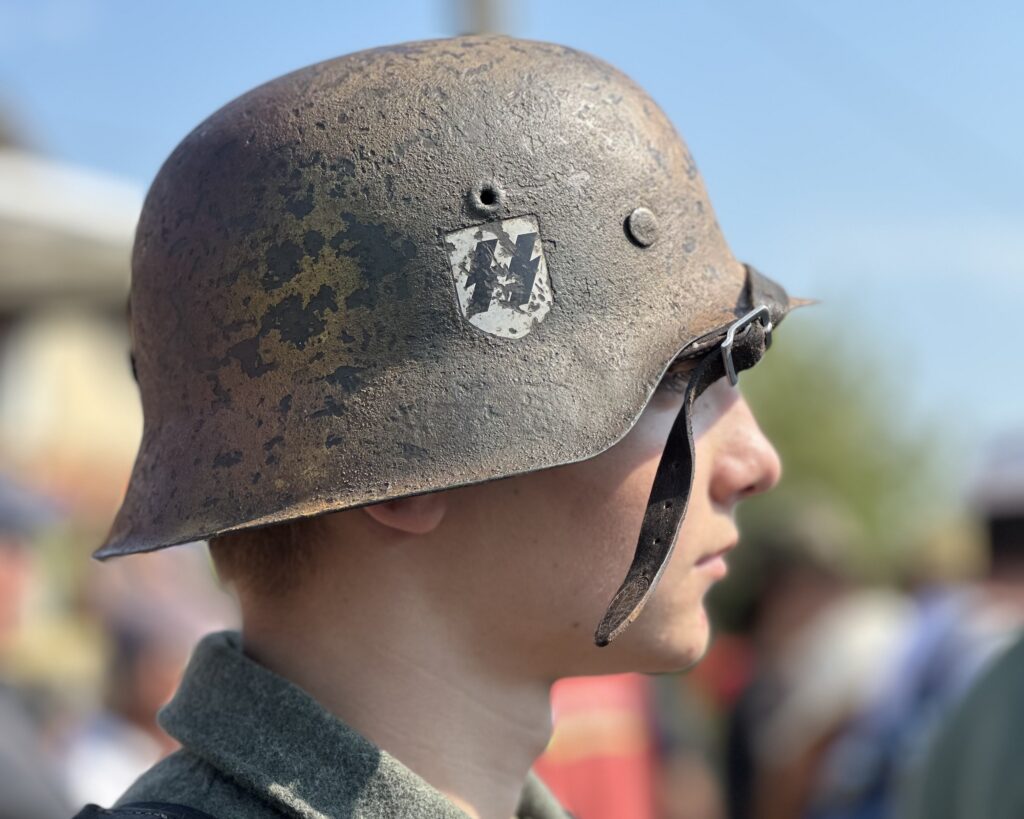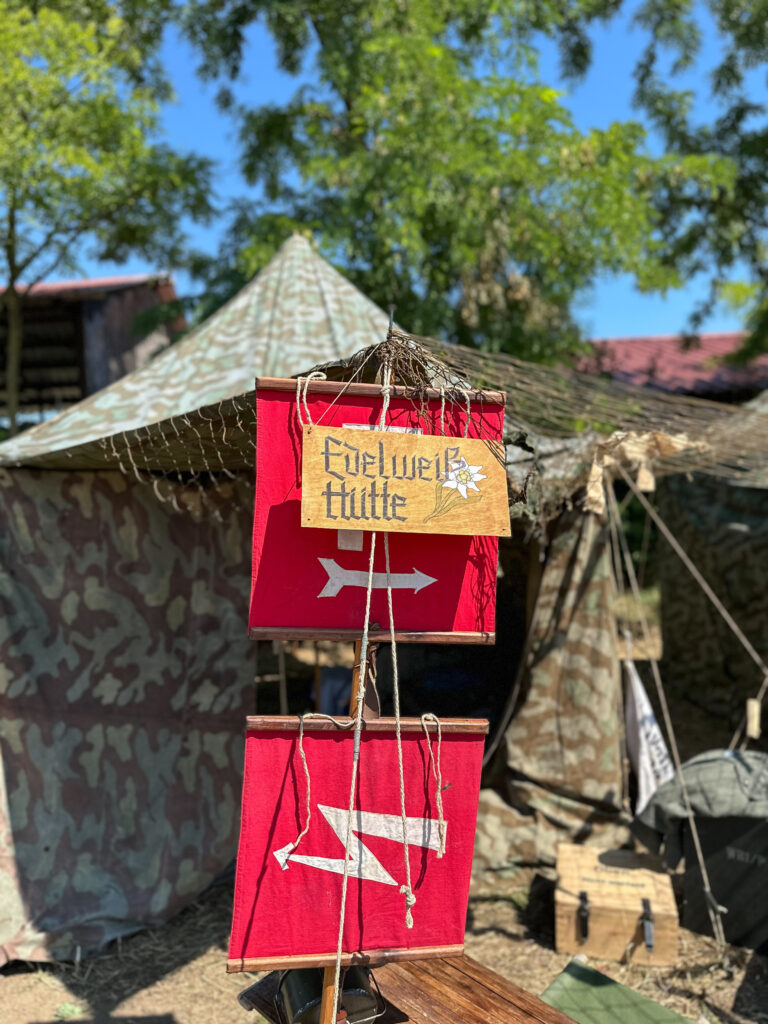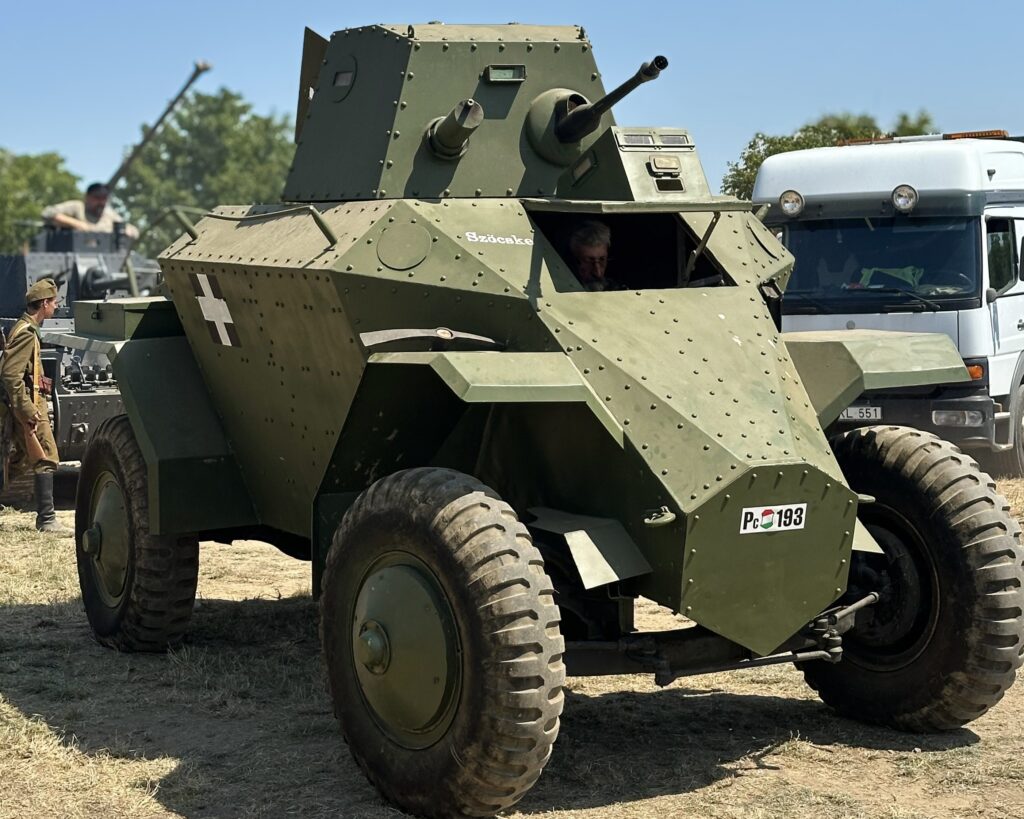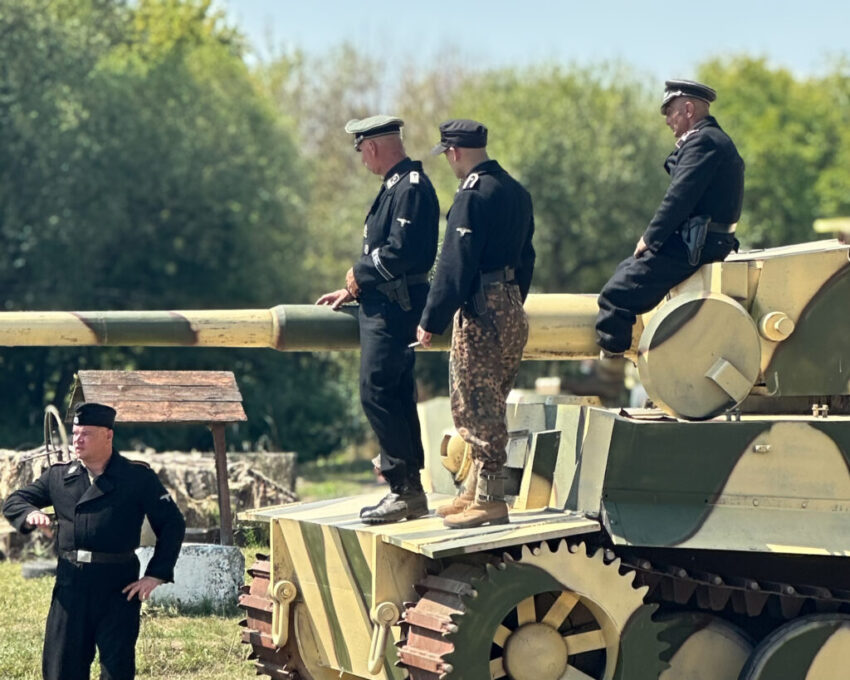More than eight decades have passed since the storms of history swept across the region, yet in Oroszka (Pohronský Ruskov), the southern winds still blow, evoking the memories of the past and linking history with the present. In August 2025, the Oroszka Museum of Military History once again organized a commemoration of a major Second World War military operation, during which the battles along the River Garam were brought to life. Visitors to the event could see period-authentic military camps, spectacular combat scenes and historical re-enactment units, which served both to preserve historical memory and to present the era in a realistic manner. During the programme, visitors could experience at close hand the everyday realities of warfare in the Second World War, while pyrotechnic demonstrations and impressive performances by law enforcement bodies added further enjoyment to the event.
Historical Background of Oroszka
Oroszka is a settlement situated on the banks of the River Garam, in present-day Slovakia, in the central part of the historical Upper Hungary. For centuries, it formed part of the Kingdom of Hungary, and subsequently of historical Upper Hungary. During the Second World War, it briefly returned to Hungarian administration, and after 1945, it became part of the Czechoslovak Socialist Republic. Since 1993, it has been within the territory of Slovakia, preserving its rich historical heritage.
Operation Südwind in Context
The event organized by the institution presents in detail the events of Operation Südwind, conveying the course of the battles, the living conditions of the soldiers, and the military equipment of the period. Thus, the programme not only serves as a tribute to the memory of the soldiers who took part, but also plays an important role in maintaining historical awareness.
‘Operation Unternehmen Südwind was of outstanding significance, as it was one of the last successful German offensive actions’
In the final phase of the Second World War, the German military operation Unternehmen Südwind was of outstanding significance, as it was one of the last successful German offensive actions on the Eastern Front. During the operation, along the River Garam, German forces temporarily broke through Soviet lines, thereby delaying their advance and securing the possibility of a strategic withdrawal. This tactical success contributed to the stabilization of the German defensive position in the area before Soviet forces ultimately regained control of the region.
Leadership and Conduct of the Operation
The commander of the operation was the leader of the German 8th Army, General der Infanterie Hans Kreysing, who, at the end of 1944 and the beginning of 1945, directed operations on the Eastern Front, particularly along the River Garam. Kreysing was an experienced officer who had previously taken part in several campaigns, and in the Southern Wind operation, he led the German forces in their tactically advantageous withdrawal and temporary breakthrough.
Notable facts about the operation:
- It is regarded as one of the last successful German operations, which temporarily pushed back the Soviet advance in the Upper Hungary region.
- During the operation, several Soviet divisions were encircled and suffered heavy losses, providing a significant tactical advantage.
- The battles involved various armoured vehicles and weapons, including the legendary German Tiger tank and the Soviet T-34 tank.
- During the operation, some of the most advanced German half-track vehicles of the period were employed, as well as BMW motorcycles, which ensured mobility and rapid communication.
- Although the operation achieved temporary success, it failed to halt the further Soviet advance, and the theatre of operations soon returned to Soviet control.

The Role of the Waffen-SS and Joachim Peiper
Units of the German Waffen-SS also participated in the operation, including formations under the command of Joachim Peiper. Peiper was an officer of the Waffen-SS who had previously played a significant role in the Battle of the Ardennes. In Operation Südwind, Peiper undertook command tasks, particularly leading fast operational groups which carried out mobile assaults in difficult terrain. His units attempted, through rapid manoeuvres, to break the Soviet lines and to recapture points of strategic importance. During the operation, he also took part in reconnaissance and in the swift destruction of enemy forces. It is important to note that Peiper was renowned for his aggressive tactics, which significantly influenced the course of the local fighting.
Special Programme Elements at the Commemoration
Among the special programmes connected with the Southern Wind operation, a prominent role was given to aerial displays, in which wartime Messerschmitt fighter aircraft and Soviet combat aircraft engaged in simulated dogfights for the entertainment of the audience. The pyrotechnic elements rendered the military displays even more realistic, enabling visitors to gain a sense of the experiences of contemporary soldiers.

The museum’s rich collection includes numerous original Second World War objects, such as engines of period fighter aircraft, equipment, decorations and relics. In addition, several wartime armoured vehicles are on display, including the legendary Soviet T-34 tank, the German Tiger tank, as well as authentic replicas of various German half-track armoured personnel carriers, including the Sonderkraftfahrzeug 251, accompanied by BMW R75 motorcycles used by the Wehrmacht, including the SS.
Organization and Public Engagement
The upkeep of the museum is managed by the Oroszka local authority, which works in close cooperation with various historical civil organizations and re-enactment groups. Hungarian and Slovak historical re-enactors play an active role in organizing and supporting the event, and the Slovak Army also participates with displays, lending authenticity and variety to the programme.
In addition to the annual Südwind programme, held every August, the museum is worth visiting at other times, as its grounds hold further points of interest. The visiting schedule is seasonal: it is open from April to October, except on Tuesdays and Sundays, and by prior arrangement, it also receives groups.

In sum, the Oroszka Museum of Military History and the commemoration of the Southern Wind campaign serve not merely to preserve the memories of the past, but also fulfil educational and communal functions, contributing to the expansion of historical knowledge and the emphasis on the importance of peace.
Related articles:
The post Operation Südwind at Oroszka: A Living Commemoration of Second World War History appeared first on Hungarian Conservative.
Click this link for the original source of this article.
Author: Konrád Gazdag
This content is courtesy of, and owned and copyrighted by, https://www.hungarianconservative.com and its author. This content is made available by use of the public RSS feed offered by the host site and is used for educational purposes only. If you are the author or represent the host site and would like this content removed now and in the future, please contact USSANews.com using the email address in the Contact page found in the website menu.








